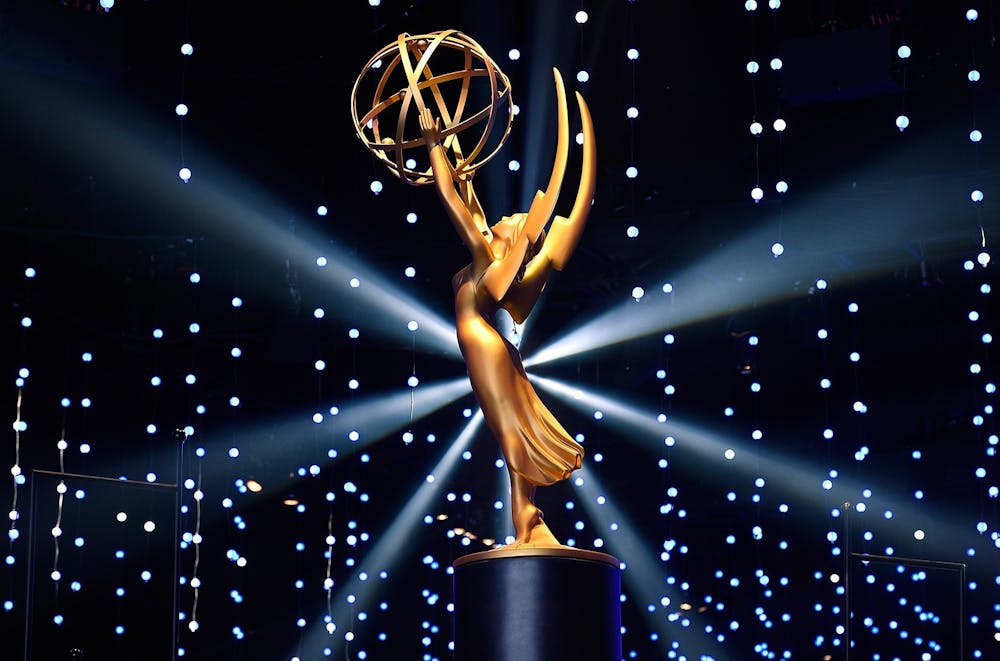Every fall, the TV awards season comes to a close with its biggest night: the Primetime Emmy Awards. Despite CBS airing this year’s Emmys, the network won nothing. In fact, the Big Four broadcast networks (CBS, NBC, ABC, and Fox), collectively only won one award: best variety sketch series for NBC’s Saturday Night Live. A decade ago, not a single streaming service was represented at the Emmys. Yet in 2021, the top awards were only awarded to Netflix, HBO (HBO Max), Apple TV+, and Disney+. One can only imagine what network executives, particularly CBS, were thinking during this telecast, in which they lost to every streaming service. In essence, CBS was airing its own funeral.
There is stellar irony that during this three–hour event, CBS telecasted a show that awarded mostly streaming juggernauts like The Crown, Ted Lasso, Hacks, The Queen’s Gambit, and Mare of Easttown. While CBS’s parent company, Viacom, did win best variety special live for Stephen Colbert’s Election Night 2020 and best competition series for RuPaul’s Drag Race, the main broadcast networks left Sunday empty–handed.
Netflix won the most Emmys with an incredible 44 wins, which ties the record for most Emmy wins in a single year with—in a cruel coincidence—CBS. At least CBS can claim its record is not broken just yet. How did these networks go from winning all of the awards to losing them in a matter of a few years? The answer is clearly streaming, yet the changing of the guard from network to streaming services is more complicated than just producing insane volumes of content.
Since the emergence of streaming services' programs in 2013 with Netflix’s House of Cards, the number of scripted television series released each year has jumped over 52% to more than 500 programs. Despite increased content, people are actually watching less television. According to Statista, the average daily time spent watching television from 2014 to 2021 has dropped from four to three hours a day. Instead of watching more, people limit themselves to a select number of shows. As people continue to subscribe to streaming services in lieu of premium cable networks, the masses have begun to congregate to streaming services to collectively join in on what everyone else is watching.
In life, most people enjoy following the crowd, which has transcended to one's viewing patterns. As more “event” or “peak TV” shows like WandaVision or I May Destroy You premiere on streaming services, the weekly conversations and buzz have begun to transfer to these platforms. While Netflix did pioneer the highly successful and efficient bingeing method, it could be argued that, from an awards standpoint, the binge method is unfavorable. Dumping full seasons of shows removes the collective experience of watching a show and being invested in the story for multiple weeks.
Of this year’s top five awarded streaming shows, only two out of five, Netflix's The Crown and The Queen’s Gambit, were released in a binge model. Not only have streaming shows moved the pop culture conversations away from cable, but they have taken back the weekly release model that has been a fixture of network shows for decades.
For any cable fans or investors, the future is not entirely gloomy. If history’s on anyone’s side, it’s broadcasting and cable's. Streaming services’ surge in television success is still a recent trend. It was only in 2017 when Hulu became the first streaming service to win one of the big three series Emmys (drama, comedy, or limited), with The Handmaid’s Tale winning best drama series. Netflix might have finished this year with 44 wins in both the Primetime and Creative Arts ceremonies, but it also had a 66% losing percentage.
It’s true that fewer network shows are being recognized by the Television Academy, with just 35 nominations among NBC, Fox, ABC, and CBS this year. But all of the streaming services have decades to go to catch up with these networks’ number of wins. There is a narrative in Hollywood that streaming services are dominating all other forms of content, which is frankly not true. According to Nielsen, the firm reported that “[64%] of the time American viewers used their television sets in May 2021 was spent watching network and cable TV, while they watched streaming services about [26%] of the time.”
By the end of 2021, Nielsen does predict the streaming share of TV watching will increase to around 33%. This trend shows streaming’s ominous presence in media, as it slowly carves a majority in people’s television consumption. However, cable TV is still watched more than streaming among all Americans. For now.
This year’s Emmy Awards showed what the future of entertainment will likely be. However, as much as CBS was airing an open casket for its company’s eventual demise, this awards ceremony should be a wake–up call for broadcasting and cable networks. Creating shows that are cultural phenomenons is a first step to restoring some power back to the original TV networks.

